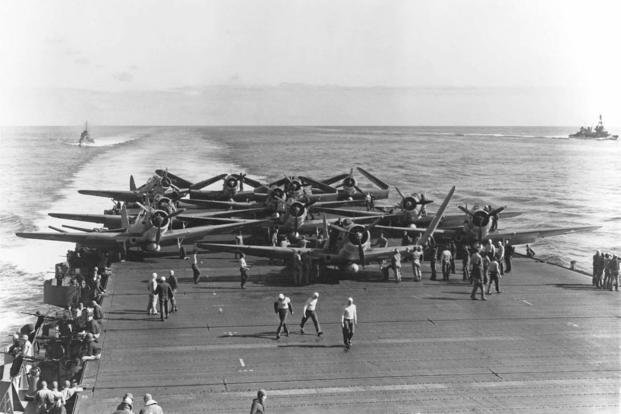In the early hours of June 4, 1942, four Japanese aircraft carriers led the attack on the U.S. base on Midway Island just six months after their attack on Pearl Harbor, Hawaii.
Unbeknown to the Japanese, American cryptographers had cracked the enemy's communication code and were aware of the date and approximate location of the attack beforehand.
U.S. carriers quickly moved in, sinking four Japanese aircraft carriers. One U.S. carrier was lost. The victory stopped the advance of the Japanese in the Pacific Ocean and marked a major defeat for the empire.
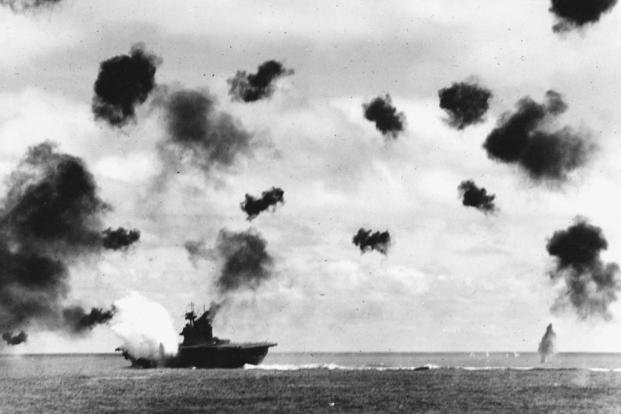
On Nov. 8 — right before Veterans Day — Hollywood plans to release the movie, "Midway." It was directed by Roland Emmerich, who previously directed "Independence Day," "The Patriot," "White House Down" and other films.
A screening took place with service members on Ford Island in Honolulu. That's the location of Battleship Row, which sustained some of the worst damage during the attack on Pearl Harbor.
Yesterday, three of the actors spoke during a Pentagon visit:
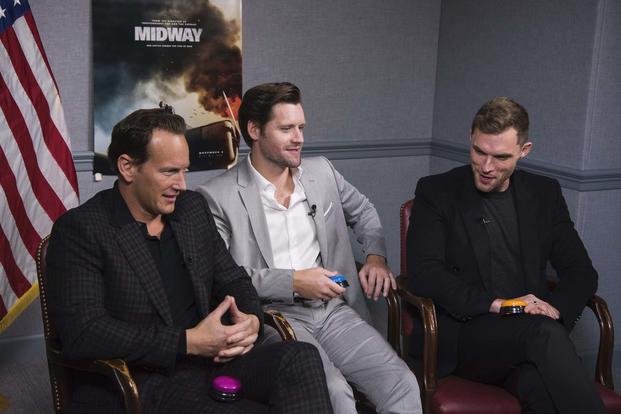
- Actor Luke Kleintank plays Navy Lt. Clarence Earle Dickinson Jr., a scout pilot and executive officer of Scouting Squadron 6 aboard the aircraft carrier USS Enterprise. Dickinson was part of the squadron that first sighted the Japanese fleet near Midway, June 4, 1942.
- Actor Ed Skrein plays Navy Lt. Richard "Dick" Best, who led a dive bomber squadron that sank one Japanese aircraft carrier and potentially damaged another in the battle.
- Actor Patrick Wilson plays Navy Lt. Cmdr. Edwin Layton, the intelligence officer who discovered that the plan to attack Midway by decoding Japanese messages.
How 'Midway' Was Made
The battle scenes for the movie were actually shot in a large hangar in Montreal, Canada, said Skrein. Inside the hangar were models that were 80% of the size of the aircraft carrier USS Enterprise — only one-third of the carrier was made into a model because that's what would fit into the hanger. Dozens of planes also made into models that were 80% of their actual size.
Skrein said the set included giant wind and rain machines to simulate the weather. The machines even make it rain sideways, which he said made it a challenge not to be blown overboard.
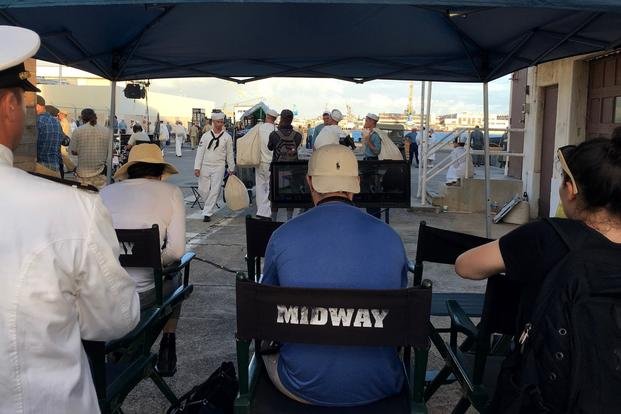
Skrein said the rest of the movie was shot in and around Ford Island.
Wilson said a good deal of computer-generated imagery and visual effects went into the movie to make it more affordable. For instance, the sinking of the battleship USS Arizona was computer-generated imagery.
The producer and director wanted to make "Midway" as detailed and historically accurate as possible, but it's not a documentary, so it was made to be as dramatic and exciting as possible, said Wilson.
Getting Into Their Roles
Wilson and Kleintank said they learned a lot about their characters from the books that were written by them:
Layton wrote "And I Was There: Pearl Harbor and Midway — Breaking the Secrets," and Dickinson wrote "The Flying Guns: Cockpit Record of a Naval Pilot From Pearl Harbor Through Midway."
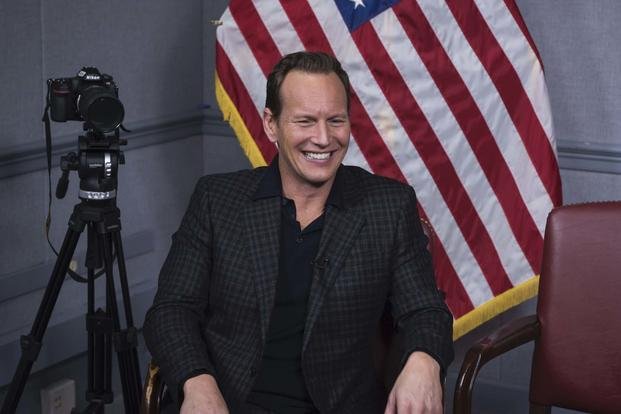
Although Best didn't write a book, Skrein said enough was said about Best in books authored by other people that he got to know the Navy veteran well.
The three actors said they also watched a lot of documentaries and also spoke to veterans of World War II to better play their characters.
Navy technical advisors were on the set throughout the filming and helped the actors play their parts accurately. Skrein said that an advisor told him not to put his hands in his pockets while conducting an operational briefing, for example.
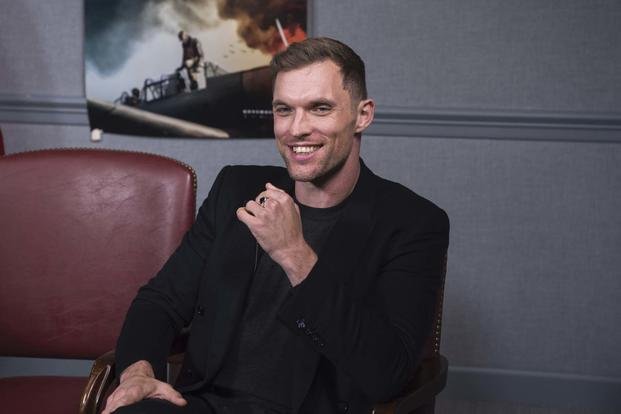
Skrein said the actors also visited Pearl Harbor Aviation Museum on Ford Island, where they got to sit inside an SBD Dauntless, a scout plane and dive bomber used at Midway. They also got to see Japanese Mitsubishi A6M Zero fighters at the museum.
Also, a dialect coach helped Skrein exchange his British accent for a New Jersey accent, which Best already had.
A Moving Experience
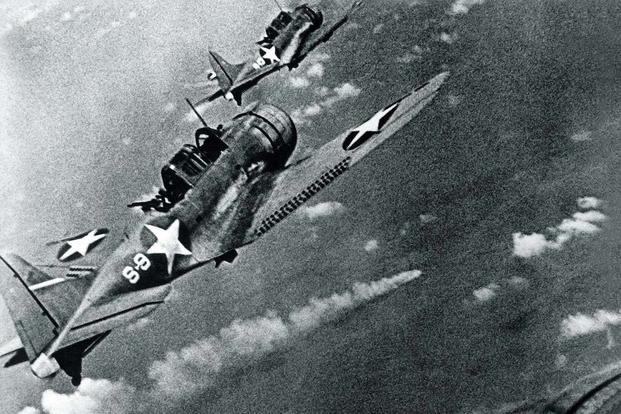
Wilson said most people probably haven't heard of the Battle of Midway. "We were happy to honor these guys who sacrificed so much."
In particular, Wilson said the movie shows the importance of those who support the frontline warfighters, such as naval intelligence personnel, who deserve a lot of credit for the battle's success.
